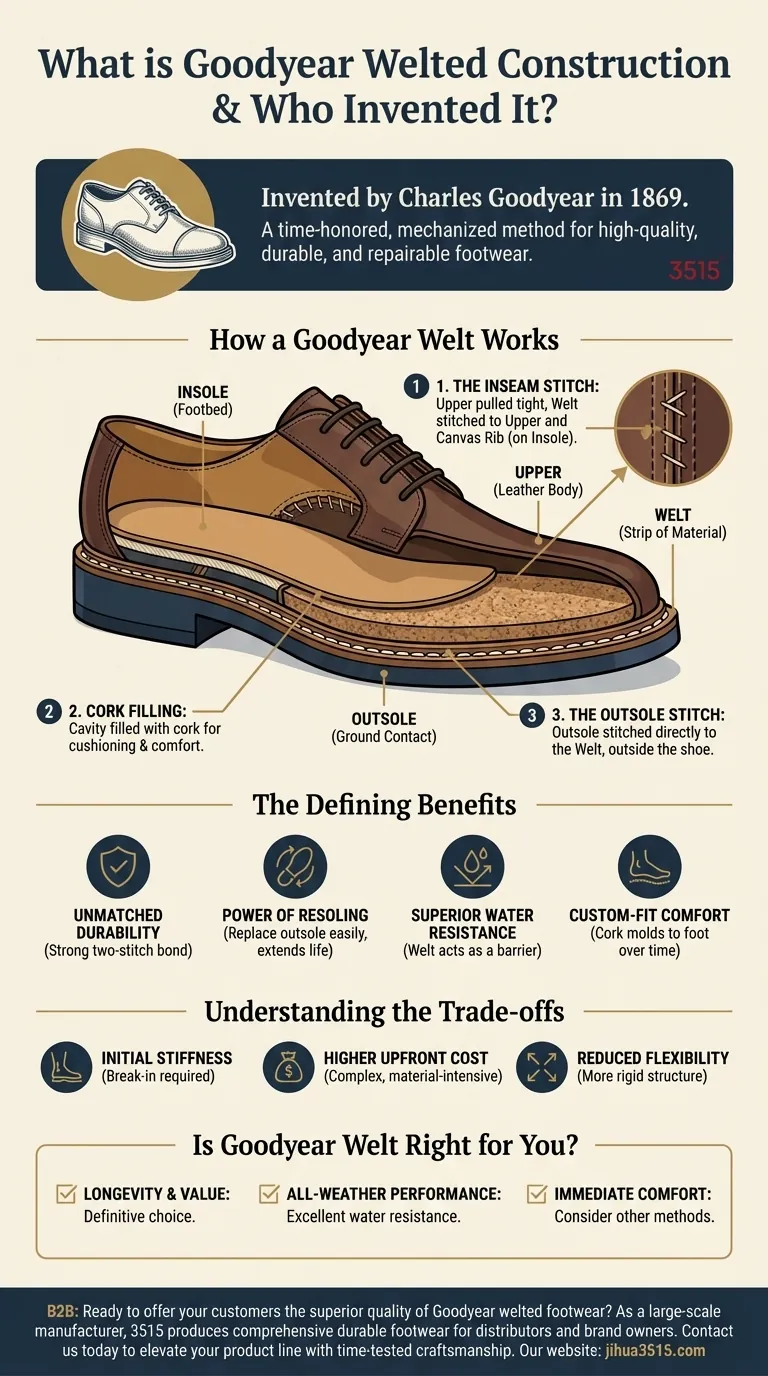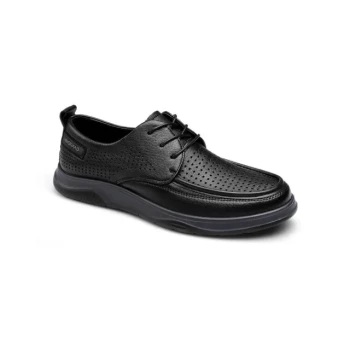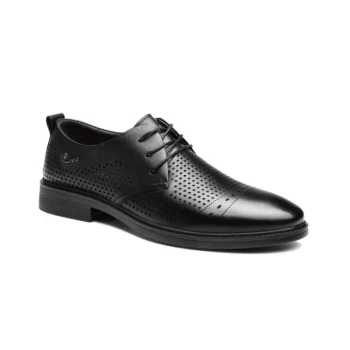At its core, Goodyear welted construction is a time-honored method for building high-quality footwear. Invented in 1869 by Charles Goodyear, it mechanizes a traditional shoemaking process to create an exceptionally durable and repairable mechanical bond between the shoe’s upper and its sole using a distinct strip of material known as a welt.
The true value of a Goodyear welt is not just its strength, but its architecture. By using two independent stitches to attach the sole, it creates a shoe that is more water-resistant, more supportive, and can be completely resoled multiple times, drastically extending its lifespan.

How a Goodyear Welt Actually Works
To understand why this method is considered a gold standard, you need to visualize its layered construction. It’s less about simple stitching and more about creating a robust, multi-part foundation for the shoe.
The Key Components
A Goodyear welted shoe is built around four primary parts: the insole (where your foot rests), the upper (the main leather body of the shoe), the welt (a dedicated strip of leather or rubber), and the outsole (what contacts the ground).
The First Stitch (The Inseam)
First, the upper is pulled tight around a shoe form (a "last") and attached to a canvas rib that has been cemented to the insole. The welt is then stitched through the upper and into this canvas rib. This crucial first stitch creates the shoe's fundamental structure.
The Cork Filling
This process creates a cavity between the insole and the outsole. This space is filled with a layer of granulated cork. This material provides excellent cushioning, insulation, and breathability.
The Second Stitch (The Outsole Stitch)
Finally, the outsole is attached by stitching it directly to the welt. This second, highly visible stitch runs around the exterior of the shoe. Crucially, it never penetrates the insole, which is key to the shoe's water resistance and repairability.
The Defining Benefits of This Method
The complexity of the Goodyear welt process directly translates into tangible, long-term advantages for the wearer.
Unmatched Durability
The two-level stitching system creates an incredibly strong mechanical bond. This construction is built to withstand years of hard wear, making it a hallmark of premium work boots and dress shoes.
The Power of Resoling
Because the outsole is only stitched to the welt, a cobbler can easily cut the old stitch, remove the worn-out sole, and attach a new one. This can be done repeatedly without ever damaging the shoe’s upper, allowing a single pair to last for decades.
Superior Water Resistance
The welt acts as a small wall or barrier between the upper and the outsole. This design makes it significantly more difficult for water to seep into the shoe from the ground compared to simpler constructions.
Custom-Fit Comfort
Over time, the cork filling and the leather insole compress and mold to the unique shape of your foot. This creates a personalized, custom fit that becomes more comfortable with every wear.
Understanding the Trade-offs
While Goodyear welt construction is a superior method in many ways, it is essential to understand its inherent compromises.
Initial Stiffness
The multi-layered construction and durable materials often result in a shoe that is quite stiff out of the box. A "break-in" period is almost always required for the shoe to become flexible and conform to your foot.
Higher Upfront Cost
This is a more complex, material-intensive, and labor-intensive process than simpler methods like cementing (gluing) soles. This is directly reflected in a higher initial purchase price.
Reduced Flexibility
Compared to a Blake-stitched shoe where the sole is stitched directly to the insole, a Goodyear welted shoe is structurally more rigid. This provides more support but offers less ground-feel and flexibility.
Is Goodyear Welted Construction Right for You?
Choosing the right shoe construction depends entirely on balancing your priorities for cost, comfort, and longevity.
- If your primary focus is long-term value and durability: A Goodyear welt is the definitive choice, as its repairability makes it a wise investment over many years.
- If your primary focus is all-weather performance: The superior water resistance of this construction makes it an excellent option for damp or unpredictable environments.
- If your primary focus is immediate, out-of-the-box comfort and flexibility: You may prefer a Blake-stitched or cemented shoe, but you will sacrifice durability and the ability to resole.
Ultimately, investing in a Goodyear welted shoe is a decision to prioritize craftsmanship and longevity.
Summary Table:
| Feature | Benefit |
|---|---|
| Two-Stitch Construction | Creates an incredibly strong, mechanical bond between the sole and upper. |
| Resoling Capability | The sole can be replaced multiple times, extending the shoe's life for decades. |
| Superior Water Resistance | The welt acts as a barrier, making it harder for moisture to seep in. |
| Moldable Cork Filling | Compresses over time to create a custom, comfortable fit for your foot. |
Ready to offer your customers the superior quality of Goodyear welted footwear?
As a large-scale manufacturer, 3515 produces a comprehensive range of durable footwear for distributors, brand owners, and bulk clients. Our production capabilities encompass all types of Goodyear welted shoes and boots, ensuring your customers get the longevity and performance they demand.
Contact us today to discuss your manufacturing needs and elevate your product line with time-tested craftsmanship.
Visual Guide

Related Products
- Wholesale Breathable Training Shoes Custom Athletic Footwear Manufacturer
- Durable Rubber-Soled Utility Shoes for Wholesale & Custom Brand Manufacturing
- Wholesale Durable & Breathable Training Shoes for Custom Brands
- Wholesale Training Shoes with Dial Lacing System Custom OEM Manufacturing
- Premium KPU Athletic Safety Shoes for Wholesale
People Also Ask
- What are the benefits of athletic-style work shoes? Boost Comfort and Safety for Your Team
- How do non-slip athletic shoes differ from regular athletic shoes? Discover the Grip Technology
- What are the benefits of breathable materials in work shoes? Enhance Comfort & Health for Your Workforce
- What are the benefits of breathable mesh in shoe design? Enhance Comfort and Performance
- What should be considered when choosing smart trainers for business casual? A Guide to Professional Style



















